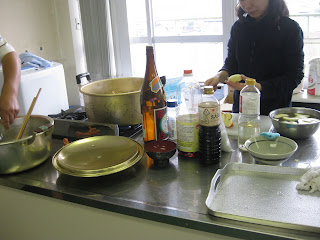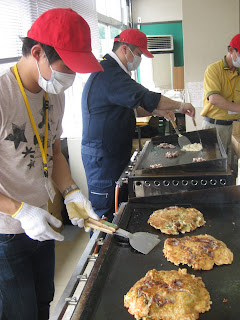Hey, its June here :) Howdy!
Sorry for the delay in blog updates!! I've been back from volunteering week 2 for a few days now but things in Tokyo have been so crazy! I've been running around like nuts!
I've also had youtube problems and I couldn't upload all my videos so I haven't done any updates yet :(
I'm working on updating youtube right now, so once that's done I'll be able to show you my incredible week in Rikuzentakata and Kessennuma.
Keep checking back!!
Wednesday, June 29, 2011
Saturday, June 18, 2011
Thursday, June 16, 2011
Sunday, June 12, 2011
YF3 x TDRN Volunteer Week 1
I'm back from week 1 of volunteering!! What an amazing experience!!
I didn't have any internet access there so I couldn't post anything until now but here it is! Read on....
DAY 1
DAY 2
DAY 5
DAY 6
I didn't have any internet access there so I couldn't post anything until now but here it is! Read on....
DAY 1
 |
| On the way to Miyagiken, Tomeshi |
 |
| This is our bus that we took from Iidabashi Station in Tokyo. We started our trip around 10:30am and arrived in Tomeshi around 5:00pm. |
 |
| we were staying in a area called Tomeshi. Out team stayed in a community center that was lent to us by the city of Tome. |
 |
| Notice the cracks along this building. This is due to the earthquake |
 |
| most of the buildings here are vacant due to the earthquake damage |
 |
| Our first dinner was "Aburafu-don" a traditional rice bowl dish. |
DAY 2
 |
| Day 2 breakfast. Today we had rice, miso soup, stir fried veggies, and natto |
 |
| an absurd amount of eggs used for one batch...!! |
 |
| okonomiyaki batter for 100 servings |
 |
| This is our kitchen in the community center. Normally this kitchen is used for cooking classes and other community events. However, they are letting us use this space for volunteers. |
 | |
| checking to make sure we have all the supplies before we drive to our location. Each day we had a new shelter to go to. |
 |
| okonomiyaki on a hotplate |
 |
| kitsune soba |
 |
| Cooking for 100 was hard because it was a constant struggle with the heat. Notice this giant pot... it got pretty sweaty in here... |
 |
| This is an area called Minami Sanriku. This is a town about 30 min away from the community center we are staying at. You can see the entire town from this hill |
 |
| Bayside Arena. This arena is the biggest volunteer base in Minami Sanriku. This arena serves as a Japanese Self Defense base, a hospital, a shelter, and a morgue |
 |
| This is one of the volunteer centres. |
 |
| There are messages from around the world on these banners |
 |
| Japanese Self Defense Base |
 |
| The Self Defense Team is currently working to clean up the area using heavy machines and to provide basic lifelines back into the town. |
 |
| This was originally a full building but now only the top part is still intact. |
 |
| These buildings are nothing but shells and will have to be rebuilt again |
 |
| Even this house on a rather large hill didn't survive the waves. |
 |
| Some areas are just filled with twisted metal and broken bits of concrete |
 |
| Notice how the bridge is barely standing above the water. You can tell how the land sunk after the tsunami. |
 |
| There are many things that have been found, anything from articles of clothing to government documents. |
 |
| This is the group I was working with for the week. |
 |
| It was really cool to see volunteers working for other volunteers. This was a meal service provided for volunteers. |
 |
| Another volunteer organization was letting us use a foot bath during lunch hour |
DAY 4
 | ||
| we're only able to keep the photos where the face is still visible, otherwise we have to throw it out. |
 |
| It was so hard to decide whether to keep the photo or to throw it out.... |
 |
| There are 10,000 photos and found articles that are still in storage spaces |
 |
| Inside the tent, it's pretty much like a sauna. Hats off to the volunteers who worked in this condition for one whole week. |
 |
| "When I grow up I want to be a fisherman" |
 |
| hanging up the pictures to dry |
 |
| "Thank you to all the volunteers" |
DAY 5
 |
| This was another shelter that we served at. It was about 45 min away from where we were staying. |
 |
| Since many residents are moving out into government housing, the number of residents in the shelters are shrinking by the day. |
 |
| Today there was another volunteer group doing an exercise routine for the older people in the shelters. |
 |
| Dinner: Chicken tomato stew, rice potato salad, and pumpkin soup |
 |
| By far the best potato salad in the world. No doubt. |
DAY 6
 |
 |
| Breakfast: Rice, miso soup, roe with pickles, seaweed and spinach |
 |
| one of the members playing with a little boy at a today's shelter. Everyone in this shelter were older folks who evacuated from Minami Sanriku |
 |
| preparing for tonight's dinner |
DAY 7
 |
| Last day!! Last shelter!! |
 |
| fruit jello :) |
 |
| Playing with a little girl who lives in this shelter |
 |
| Last dinner: Mabo tofu, Hatto soup, pickles, watermelon, fruit jello |
 |
| Group shot of all of us!! |
Subscribe to:
Posts (Atom)












































































































